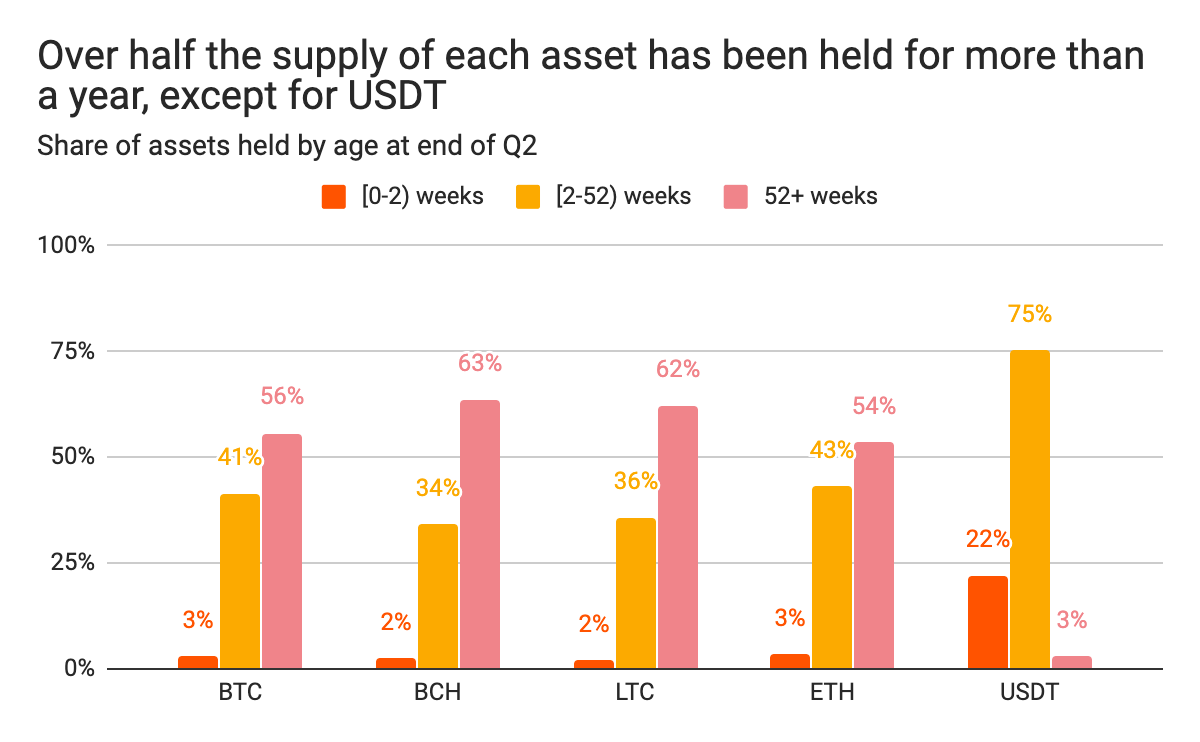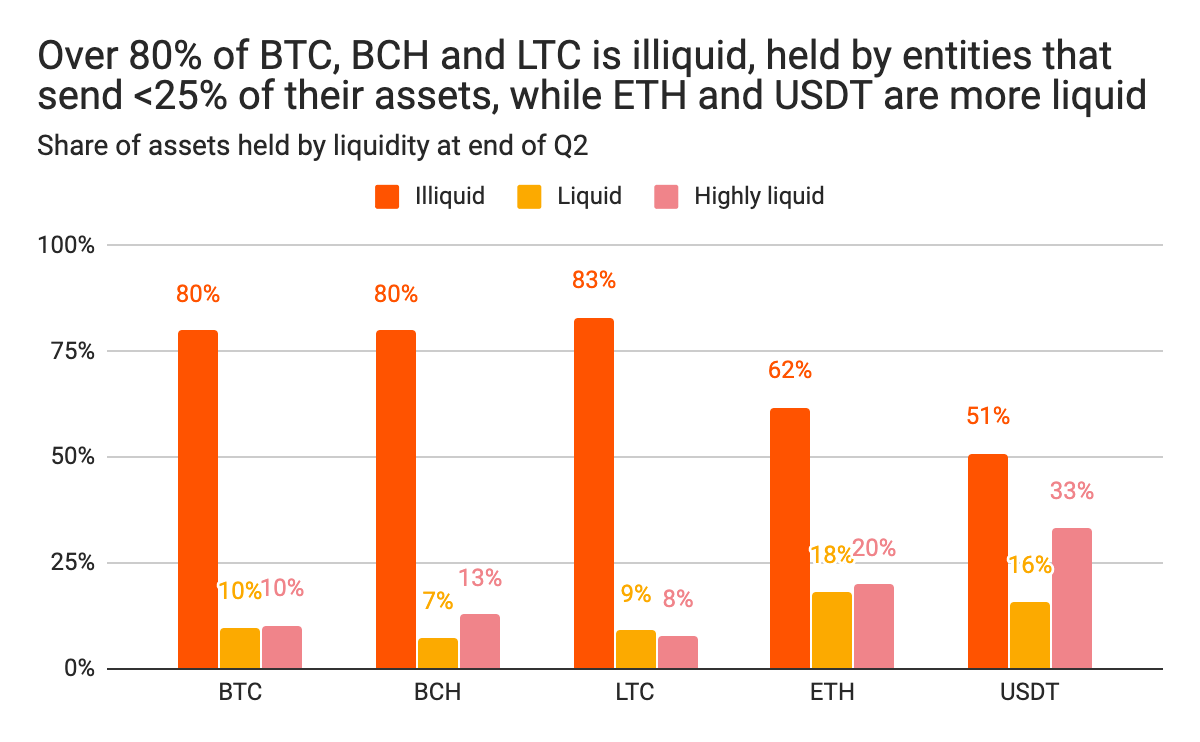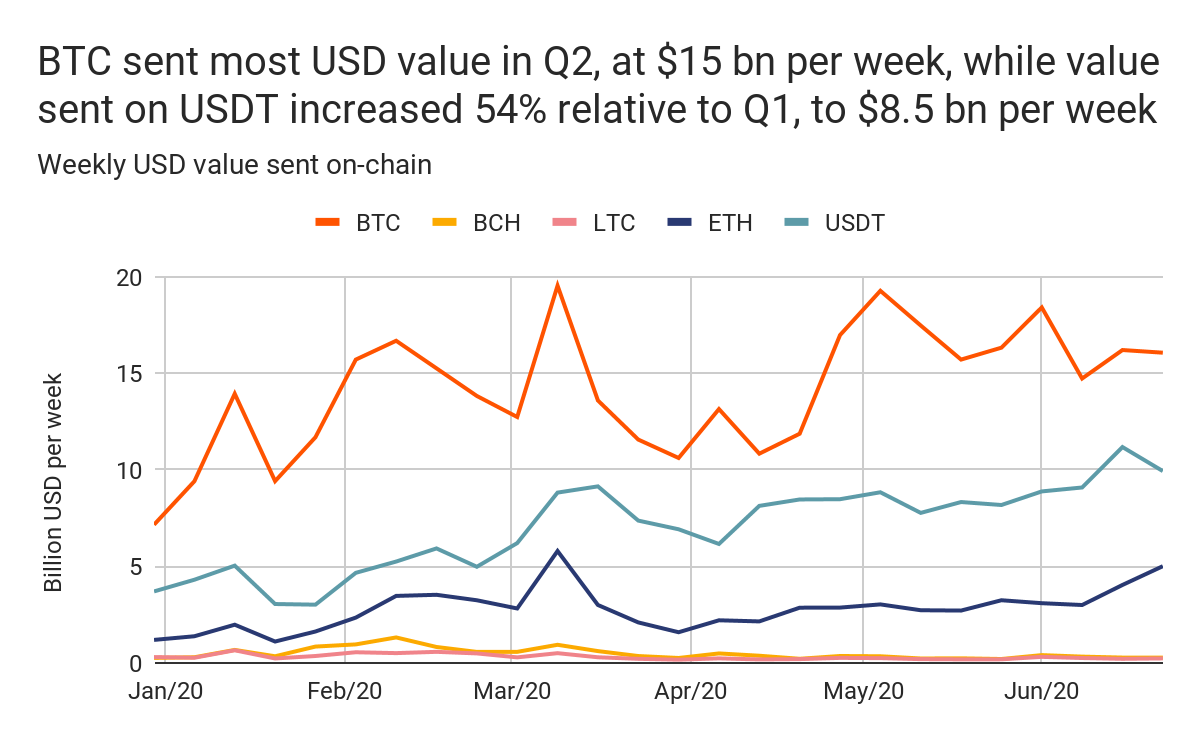Today, we’re excited to announce the launch of our new website: Market Intel. Market Intel uses Chainalysis data to give asset managers and regulators live data and insights on cryptocurrency usage, as well as the health and growth of cryptocurrency markets. Access is free of charge, and from the site you can subscribe to the Market Intel Report, a weekly email summary of the on-chain events and trends in cryptocurrency that focuses on their short-term implications for cryptocurrency markets and the long-term evolution of cryptocurrencies as an asset class.
Growing the Cryptocurrency Market with Data & Insights
Today, most of our customers use Chainalysis products to track illicit transactions conducted with cryptocurrency for compliance and investigation purposes. But illicit transactions only represent about 1% of all cryptocurrency activity. The data that powers our products also captures the other 99% of activity associated with investment, trading, and transactions. Market Intel harnesses that same trusted dataset to provide metrics around the trading, supply, demand, generation, and risk of cryptocurrencies.
These actionable insights can equip investors and regulators to evaluate risks and opportunities in cryptocurrency more effectively, which will be crucial as cryptocurrency continues to become a more prominent investment vehicle. Just this year, prominent investors like Paul Tudor Jones have said they’re betting big on Bitcoin, while Charles Schwab announced recently that Grayscale’s Bitcoin Trust is one of the five most popular assets for its millennial clients. Banks are also coming around, as JP Morgan recently began offering banking services to cryptocurrency businesses, while the OCC said last week that federally chartered banks can offer cryptocurrency custodial services. All of these events further legitimize cryptocurrency as an asset class and give more people the opportunity to get involved.
But at the same time, investors need trustworthy data for these endeavors to be successful, and regulators need insights into what’s actually happening in the markets to meaningfully invest and effectively oversee the space. Fidelity Digital Assets found in a recent survey of institutional investors that the third-ranked obstacle to investment, after price volatility and market manipulation concerns, is a lack of data to provide insight into the health and growth of digital assets and networks. Market Intel can provide the data investors and regulators need to move into cryptocurrency with confidence.
Market Intel is now available in Beta, at no cost, with metrics and insights across Bitcoin, Ethereum, Tether (on Bitcoin and Ethereum), Bitcoin Cash, and Litecoin, with improvements and additions planned over time. .
Check out the Market Intel website now, and sign up for the Market Intel Report.
We want your feedback! Send comments on Market Intel to marketintel@chainalysis.com
Below, we’ll give you a quick recap of the cryptocurrency trends we saw in Q2 2020 to show you how Chainalysis data can help you better understand cryptocurrency markets.
Our Latest Market Insights
Bitcoin gets older and colder
At the end of Q2, 56% of all mined Bitcoin had been held at its current address for more than a year, and 80% was illiquid, meaning it was held by an entity, in a wallet or group of connected addresses, which sends on average less than one quarter of the Bitcoin they receive. This data leads us to conclude that most Bitcoin is held as a long-term investment and rarely moves. This long standing trend of old, cold Bitcoin accelerated in Q2, as the numbers above represent a 3% increase in the share of illiquid Bitcoin and a 2% increase in the share of Bitcoin that has been held for more than a year compared to Q1. The increase in age and decrease in liquidity reflects, or may even drive, the decline in price volatility since May as investors became more passive.
Still, roughly 10% of available Bitcoin — about 1.77 million, or $15 billion USD worth — moved between addresses per week on average during Q2. Of the Bitcoin that moved, 81% was held for less than two weeks before being sent and 67% was held by highly liquid entities, which we define as those that send more than two thirds of what they receive. So, while a minority of Bitcoin moves frequently, that minority moves rapidly, largely circulating between exchanges.
Ethereum acts more like Tether, and Tether acts more like Bitcoin
Our data shows that Bitcoin Cash and Litecoin behaved similarly to Bitcoin in Q2. Ethereum resembles Bitcoin in terms of age but has a liquidity similar to Tether. Tether became much more illiquid in Q2, perhaps being used more as a store of value, so acting more like Bitcoin.


Our data shows that Bitcoin Cash and Litecoin are roughly as illiquid as Bitcoin, with an even greater share of assets held for more than a year. Furthermore Bitcoin Cash and Litecoin aged considerably in Q2, with a 15% and 10% increase in assets held for more than a year respectively, compared to Q1. These assets also move far less in terms of USD value per week. Bitcoin Cash’s weekly flows were just 2% of Bitcoin’s in Q2, and Litecoin’s just 1.5%. This combination of aging and inactivity means these assets risk losing their price support. This may already be happening, as their price per Bitcoin has declined by 31% and 33% in Q2 for Bitcoin Cash and Litecoin respectively.
Ethereum is similar to Bitcoin in terms of the share that hasn’t moved in over a year. However, 38% of Ethereum is held at liquid or highly liquid addresses compared to just 20% for Bitcoin. Ethereum’s liquidity is more similar to that of Tether, which we analyze on Bitcoin’s Omni Layer and on Ethereum. Surprisingly for a stablecoin often viewed as equivalent to fiat currency, 51% of Tether was illiquid at the end of Q2. This is a big change from Q1, when just 32% of Tether was illiquid. In this last quarter of global crises, Tether may have found a new use case as a store of value. With the supply of Tether on Bitcoin and Ethereum having increased by 50% in Q1 and 27% in Q2, there is now enough Tether to go around.

While Tether may be finding a new use as a means of value storage, Ethereum’s transactional use is increasing, perhaps due to increased interest in DeFi (note that we remove ERC-20 transactions from our Ethereum data, so these numbers represent the actual use of Ethereum). However, Tether still leads Ethereum in terms of transaction volume and is second only to Bitcoin on this metric, with $8.5 billion sent per week on average in Q2, a huge 54% increase on Q1 volumes. While these Q2 volumes are an upper bound estimate that may be revised down, the trend is clear that the shift to issuing Tether on Ethereum, with $3.7 billion worth added from 18 February to end of Q2, has increased the transactional use of Tether.
Ethereum on the other hand moved $3 billion per week in Q2, a 15% increase on Q1. It will be interesting to see if Ethereum starts to be more actively used, breaking away from the buy-and-hold profile of Bitcoin, Bitcoin Cash and Litecoin. In contrast, it will be important to track whether more people start to hold Tether as a store of value, making it more like Bitcoin.
This analysis considered just three metrics, but shows that Chainalysis on-chain data gives insight into cryptocurrencies that is not possible in other asset classes. For more of these insights, head to Market Intel, sign up for the weekly report, and follow us on Twitter at @chainalysis for more updates.
